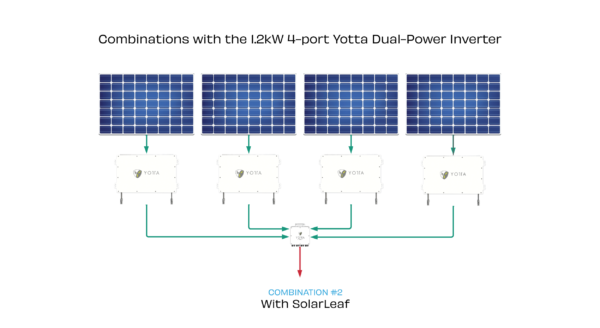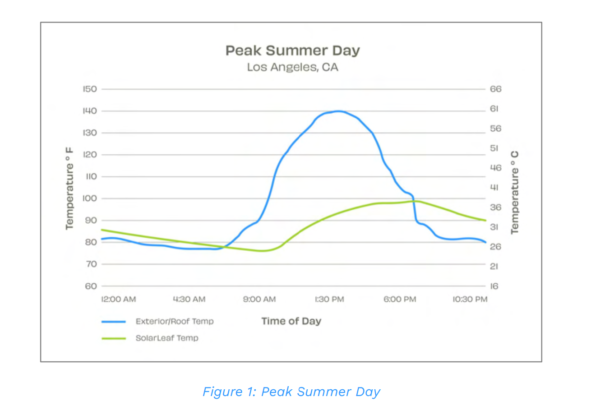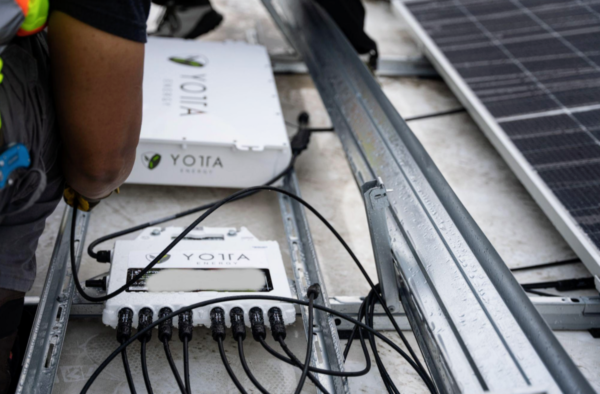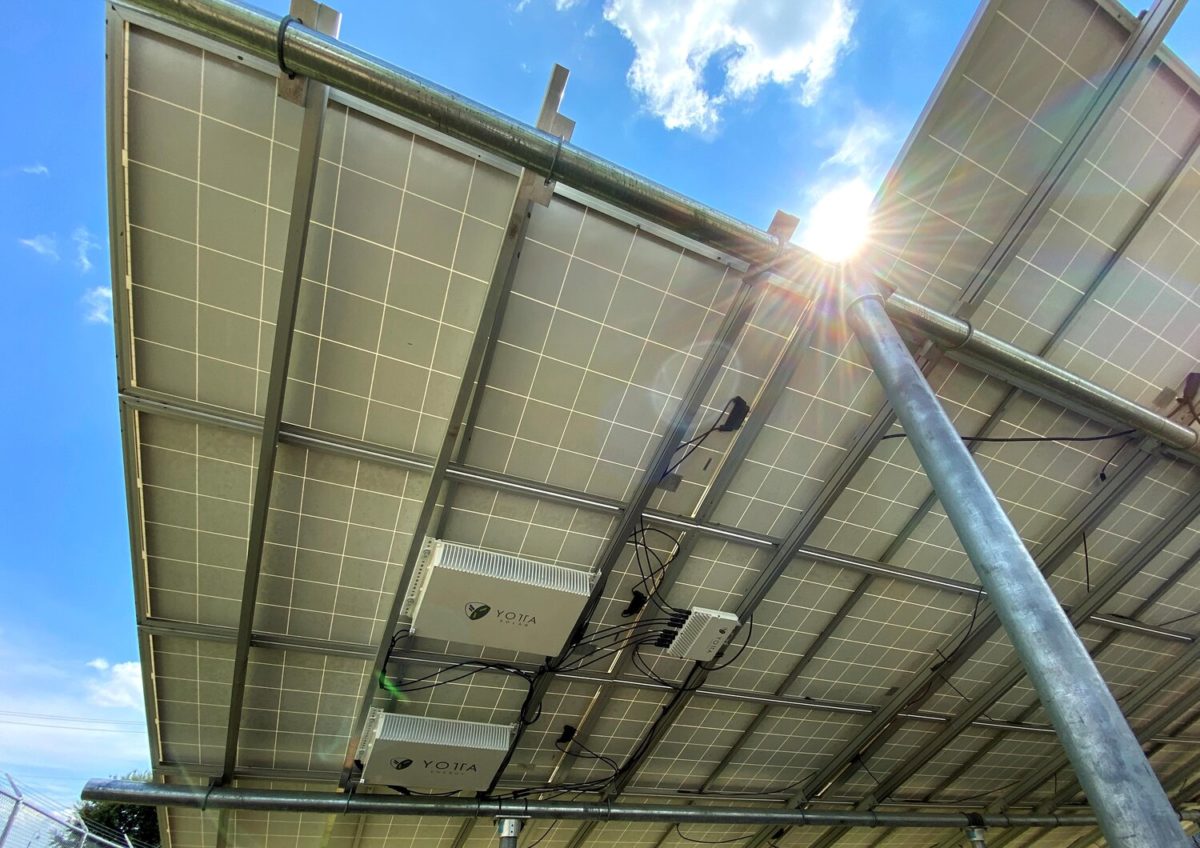Yotta Energy raised $13 million from a group of investors to further develop its rooftop energy storage solution. This is at least its second cash raise, as Yotta gotta lotta money in August of 2019 as well. The company noted a 12-contract deal signed with EcoBuild of Louisiana, which started with an 87 kW solar+Yotta project.
Yotta Energy has evolved from offering only a battery on the roof to partnering with a microinverter manufacturer. It also offers a solution which comes with their own wireless gateway including battery management software.
Its refined offering distributes the smart grid one degree further.
Long ago, the first grid-edge intelligence was found in the charge controllers combined with offgrid inverters. We then saw those smarts arise in inverters installed in high solar density Hawaii, which no longer allows solar power to be exported to the grid from a residential location. Of course, batteries can now provide any service that the grid needs.
Yotta Energy’s lithium-iron-phosphate battery is a 1 kWh unit that accepts up to four solar panels. The company says the system can scale to 1 MWh of battery, meaning 1,000 units.
Each battery can be wired with up to four solar panels, although two panels are considered optimal. The 1.2 kW microinverter can handle up to four 440W+ solar panels, with one battery per panel. The unit has a 10-year warranty by default, and there is a 15-year extension available.

The energy storage solution is designed to be installed on flat roofs. On its website, Yotta states that its product integrates into Panel Claw’s clawFR. The company’s software suite has grown to standardize integrated features which had previously been considered advanced for a battery inverter. These include the ability to dispatch electricity, which can be based either on price signals or on the more standardized time-of-use electricity tariffs which often affect commercial and industrial customers.
The software also can be coupled to third-party tools, which suggests that it has the ability to offer broader grid services.
Yotta says that its pricing competes with a centralized larger battery due to significant reductions in installation labor, cranes, concrete pads, wiring, permits, and so on. Attaching an extra component to the racking system is relatively simple compared to installing large cabinets and shipping containers.
Of course, the elephant in the room is battery temperature: These batteries are located on top of the hottest part of the building. Yotta’s website provides a white paper analyzing the product’s temperature on a commercial rooftop in Los Angeles during a heatwave.

As shown in the graph above, the temperature soars to just over 140°F up on the building’s roof, but the battery temperatures stayed cool, under 100°F. Looking at the white paper, we see that battery temperature correlates more closely with battery utilization than with roof temperatures.
The key technological innovation that this author sees is how this product brings a new class of intelligent hardware to the very edges of the power grid, right next to solar panels. Whether this form factor offers more (or even less flexibility) to our power grid compared to a centralized battery inverter sited at a customer’s building remains unknown. However, these devices have greatly increased the number of sites eligible for battery integration. That, in and of itself, adds a significant value.
The grid aware inverters in Hawaii and utility scale batteries offering ancillary services blazed the trail. Now we’re seeing even more components join the big dance.
Electric panels are getting smarter, with groups like SPAN offering circuit level intelligence. Sunrun announced that it would bring Ford electric vehicles into the house as battery backups. Additionally, Enphase has finally launched its IQ8 inverter, which allows your home to run on pure solar during the daytime–even if the grid goes down–without a battery.

These tools are part of the same revolution driving companies like Sunrun, Tesla, and electricity utilities that are directly integrating residential solar plus energy storage systems into the big power grid via virtual power plants.
The Federal Energy Regulatory Commission’s Order 2222 mandates that the wholesale energy markets of the United States integrate distributed energy resources (like customer sited solar and batteries). This means that the portfolios of distributed energy in most of the United States will be allowed to bid into power grid markets, not just the few key leading states like California, Massachusetts, and Texas.
According to analysis by Vibrant Energy, there’s an opportunity for a quarter of our future power grid to become distributed. This could save ratepayers hundreds of billions of dollars if these resources are fully taken advantage of. We already have evidence that distributed resources and efficiency have saved California billions in power grid upgrades.
However, we’ve really only touched on the beginning of distributed value. A recent analysis in Connecticut suggests that the state can get 85.5% of the northern state’s electricity from rooftop and carport solar alone.
Tools like Yotta Energy’s rooftop distributed battery, combined with modern inverters, electric panels, vehicles, and – of course – solar power, will allow individuals and businesses to purchase the resilience needed to defend against power grid challenges like we’re seeing in California, and those which led to hundreds of deaths in Texas during last February’s winter storm.
This content is protected by copyright and may not be reused. If you want to cooperate with us and would like to reuse some of our content, please contact: editors@pv-magazine.com.








By submitting this form you agree to pv magazine using your data for the purposes of publishing your comment.
Your personal data will only be disclosed or otherwise transmitted to third parties for the purposes of spam filtering or if this is necessary for technical maintenance of the website. Any other transfer to third parties will not take place unless this is justified on the basis of applicable data protection regulations or if pv magazine is legally obliged to do so.
You may revoke this consent at any time with effect for the future, in which case your personal data will be deleted immediately. Otherwise, your data will be deleted if pv magazine has processed your request or the purpose of data storage is fulfilled.
Further information on data privacy can be found in our Data Protection Policy.